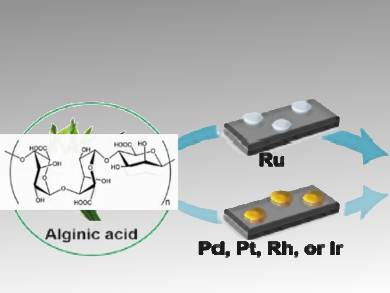Algal biomass, known as a third-generation biomass, has advantageous compared to cellulose such as rapid growth, inedibility, and lignin-free composition. Do Heui Kim, Seoul National University, Korea, and colleagues have, for the first time, hydrogenated alginic acid, a major constituent of macroalgae into sugar alcohols over carbon-supported noble metals.
Mannitol and sorbitol are the major products of this catalytic hydrogenation. The main reaction pathway is the consecutive hydrogenations of the aldehyde and carboxyl ends of alginic acid dimers. This is followed by the cleavage of the C–O–C linkage into monomeric units by hydrolysis.
Ru, Rh, Pd, Ir, and Pt, supported on carbon were tested as catalysts, of which Ru exhibited the highest yield of sugar alcohols. As much mannitol as sorbitol was produced, owing to the composition of alginic acid, which is composed of two epimeric monomers, and to the isomerization of hexitols. The leaching and aggregation of the active metal, Ru, after the reaction caused deactivation of the catalyst.
According to the researchers, their green route to produce sugar alcohols from alginic acid instead of cellulose could provide new opportunities to alleviate the large dependence on lignocellulosic biomass and to better utilize macroalgae as an alternative renewable feedstock.
- Catalytic Hydrogenation of Macroalgae-Derived Alginic Acid into Sugar Alcohols,
ChungHyeon Ban, Wonjin Jeon, Hee Chul Woo, Do Heui Kim,
ChemSusChem 2017.
https://doi.org/10.1002/cssc.201701860




